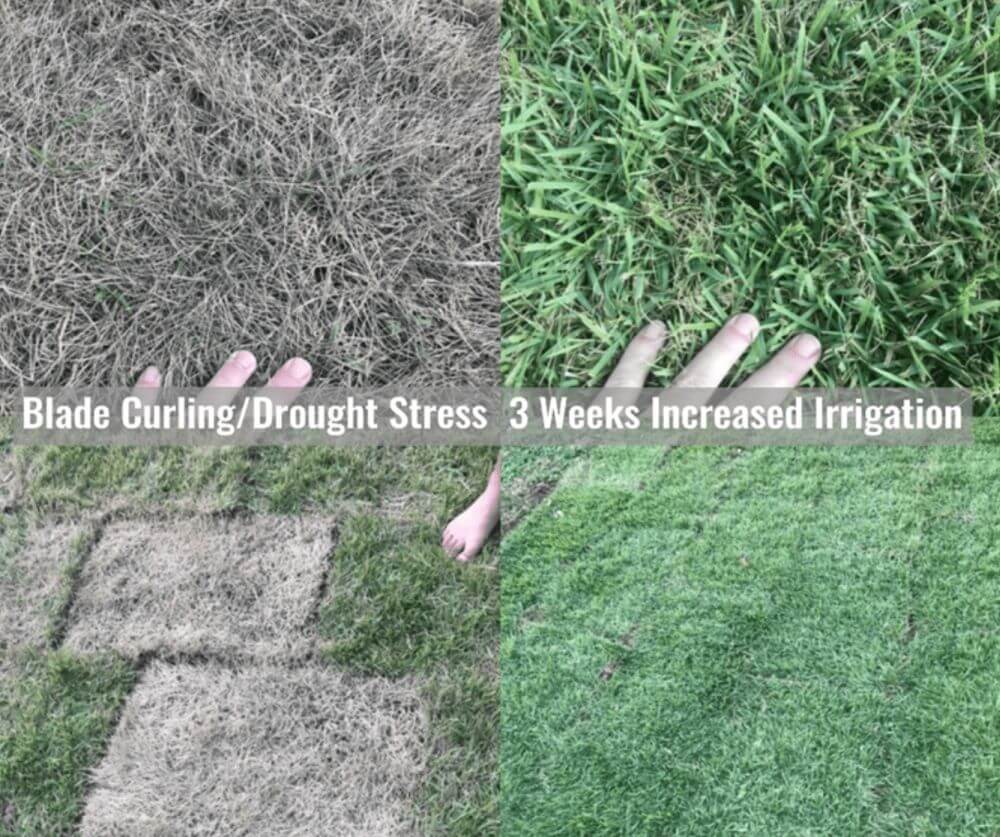Different/Incorrect Variety Part 2

Blade-curling observed after the grass is installed indicates that the grass is stressed and is likely not receiving enough water. This is one of the first signs of drought stress, and keeping an eye out for this & other signs of stress will enable you to correct the problem before it gets out of hand. Blade-curling is more noticeable in medium to wide-bladed varieties, such as Palisades Zoysia and St. Augustine. Please thoroughly review the irrigation article nested within our Grass Care pages for instructions & tips on irrigating correctly.
Further, the extent of blade curling can vary depending on different factors, such as ambient temperatures, wind speeds, and harvest time. For example, the first pallet harvested will stress more than the last pallet harvested because it will sit on the pallet a little longer. Rest assured, as long as the grass is installed promptly & watered correctly, the time in which your grass is harvested will not effect its establishment or long-term health.
Depending on soil cultivation depth, soil type/condition, ambient temperatures, weather, and your irrigation schedule, your grass blades should swell to their regular width within the first few weeks of proper water. If you observe your grass declining over these first three weeks, please reach out to us as soon as the decline is observed. That said, please allow at least 2-3 days post-installation for observable signs of improvement.
Common Causes:
- Improper Irrigation
- Irrigation Method (hand watering)
- Ambient Temperatures 80°F & Up
- Delayed Installation
- Improper Installation (gaps, overlapping, etc.)
- Irrigation Malfunction
- Sloping/Water Runoff
- Top Blocks (more exposed to wind & sun)
Resolution:
- Prompt Installation
- Prompt Irrigation
- Proper Irrigation Method
- Proper Irrigation Schedule
- Deep Soil Saturation





